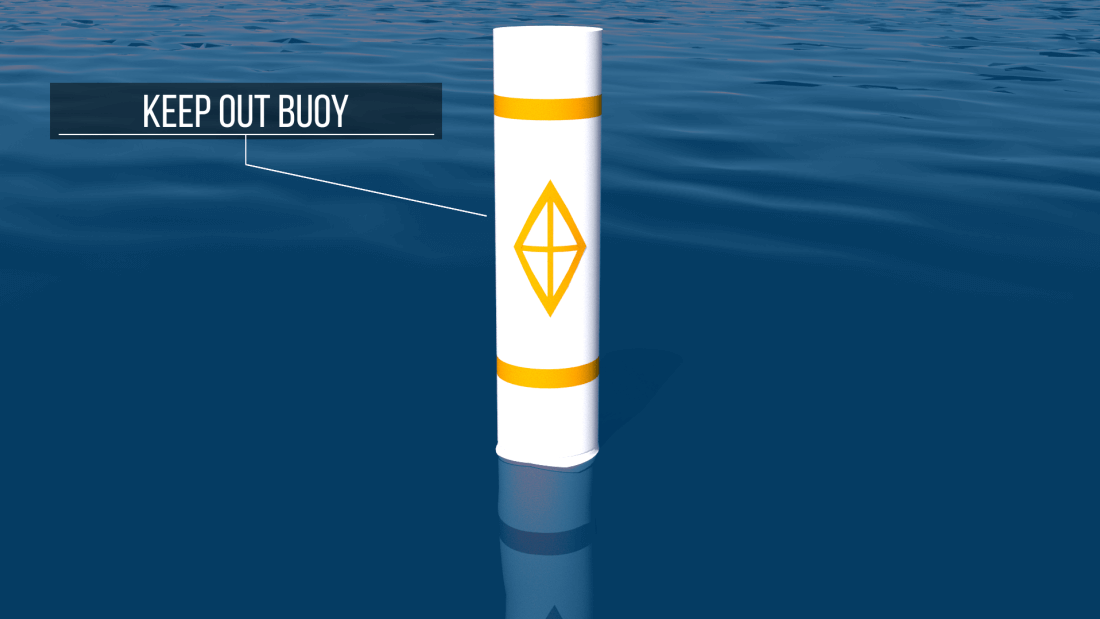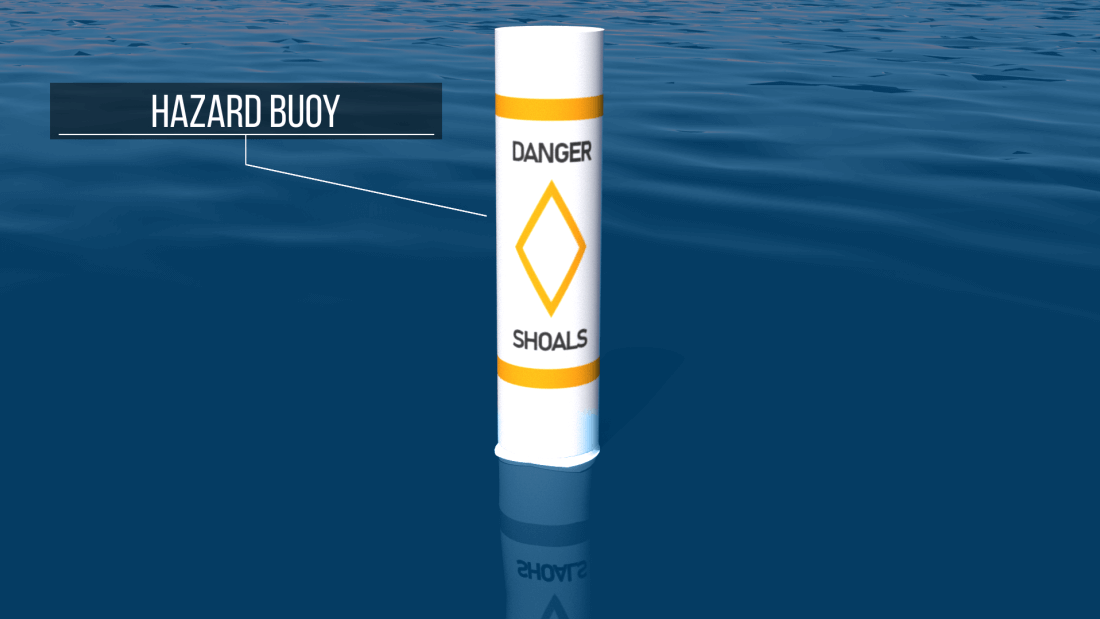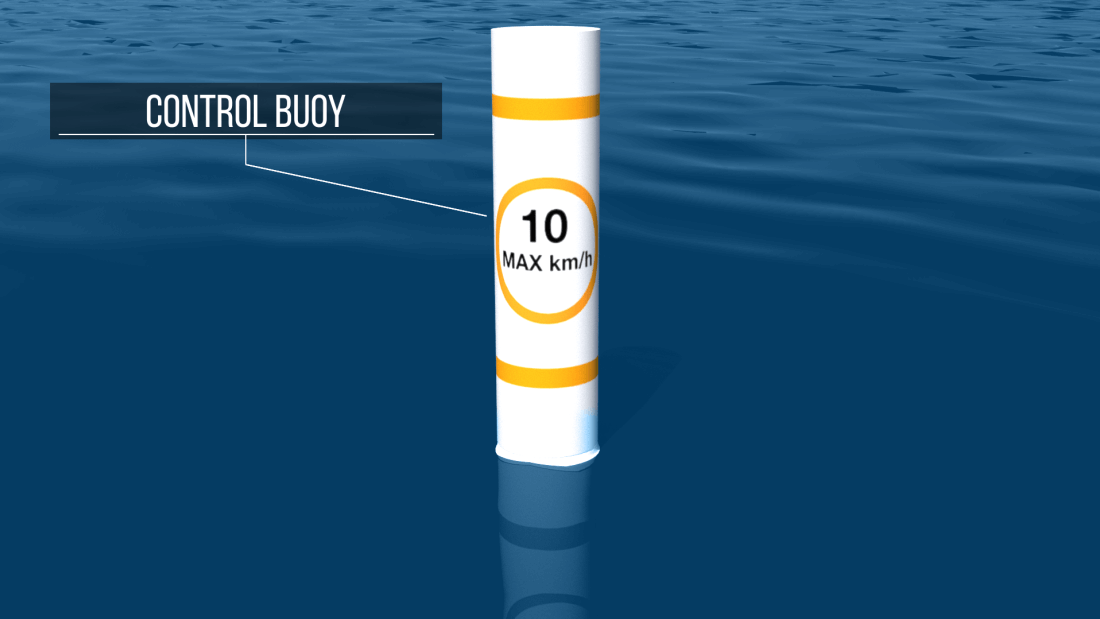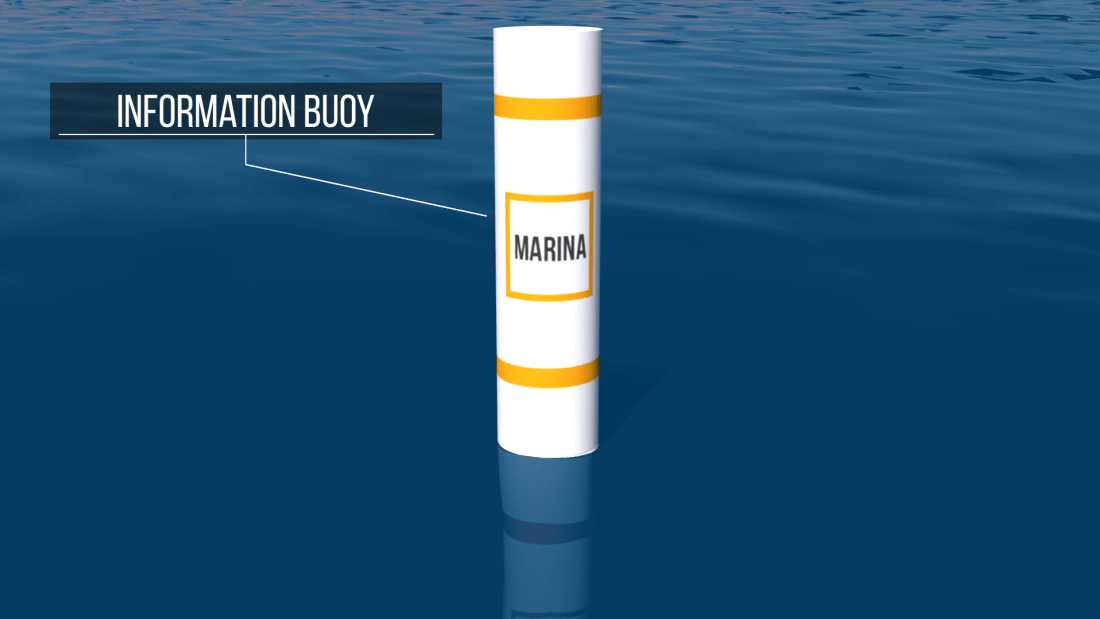Non-Lateral Markers Exclusion buoy - Danger buoy - Control buoy - Information buoy
What does a non-lateral marker indicate?
- Non-lateral markers are used to advise you of situations, dangers, or directions.
- They may indicate shoals, swim areas, speed zones, etc.
Non-lateral markers are easily identified through which features?
You can quickly recognize them by the distinct orange stripes wrapping the top and bottom of each marker.
Exclusion buoy / Keep-out buoy
What does a white buoy with an orange crossed diamond indicate?
What should you do when you see a white buoy with an orange crossed diamond?
You must keep out of the area.
Vessel operation is prohibited.
Typical areas for these buoys are swimming area, rapids and dams.

Danger buoy
What does a diamond non-lateral marker indicate?
The nature of danger may be indicated inside the diamond shape, such as rock, wreck, shoal, dam, etc.

Control buoy
What does a white marker with an orange circle mean?
The type of control is indicated in the circle, such as slow, no wake, anchoring, etc.
It may show white light and/or may be lettered.

Information buoy
What does an orange square mean on a buoy?
For displaying information such as directions, distances, locations, etc.

Now that you have an idea of the different types of non-lateral buoys and markers you will encounter while boating, come discover with us all the other aspects of boating with our online boating safety course and obtain your boater card.